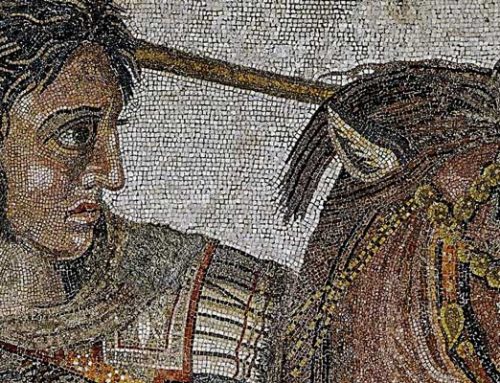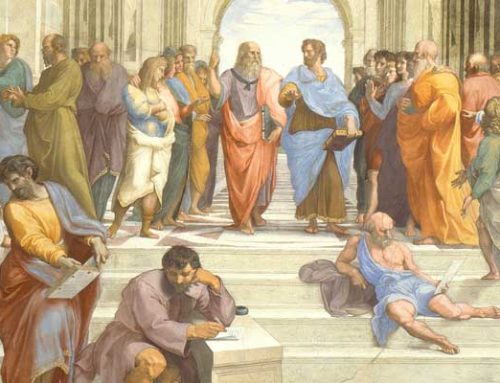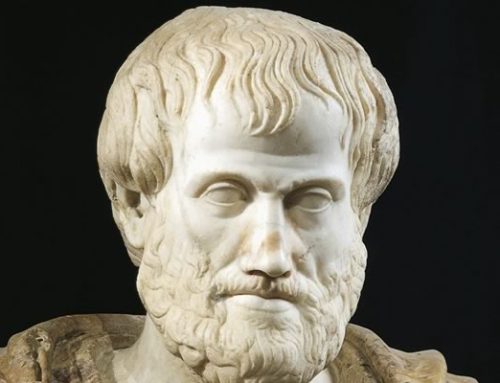Most of our study of ancient Greece is focused on what we call the Classical Age. The Classical Age of Greece is a two-hundred-year period that began about 500 years before the Common Era. During the Classical Age, the Greek poli combined to defeat the powerful Persian Empire. The Greeks of the Classical Age created art, architecture, and literature that have influenced how we live today. The Classical Age came centuries after two earlier civilizations, the Minoans and the Mycenaeans, flourished and then vanished, leaving the Greeks in a period later called the Dark Age of Ancient Greece.
The Minoan culture developed on Crete, an island southeast of the Greek mainland as early as 2700BCE. The Minoans were a sea-faring culture that traded with other cultures that bordered the Mediterranean Sea. They developed a system of writing that modern scholars call Linear A. Although we have more than 100 examples of Linear A writing, scholars have not deciphered its meaning, so we know little about the Minoans. We do know the Minoan civilization mysteriously disappeared about 1450BCE. There is some evidence that the fall of the Minoans is related to a catastrophic volcanic eruption.
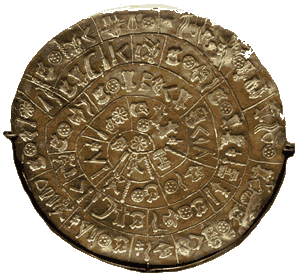
Phaistos_Disc
The Phaistos Disc is a remnant of the Minoan Civilization. It was discovered in 1908 on the island of Crete. We don’t know much about the disc because we have not yet deciphered the writing of the ancient Minoans.
The Minoans traded with the Mycenaeans, another trading culture on the Greek mainland known for making bronze weapons and pottery. The Mycenaeans had a syllabic script we now call Linear B because there is evidence that it developed from Minoan writing. About a millennium before the Common Era, the Mycenaean culture grew weak and was conquered by invaders from the north known as Dorians.
For the next several hundred years, Greece fell into a period called the Greek Dark Age. There have been several dark ages in history. A dark age occurs when a civilization regresses or forgets some of the things they know. During the Greek Dark Age, few people could read and write.
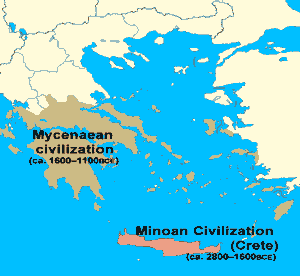
Minoans_Mycenaeans_map
Approximate borders of Minoan and Mycenaean influence.
The Greeks who lived in the Dark Age could not read the mysterious writings of the Minoans and the Mycenaeans, but they did have many legends handed down by word of mouth. These stories became the basis of what the Greeks later called their Heroic Era. The Heroic Era was a period of great glory that the Dark Age Greeks believed preceded their own time.
During the Greek Dark Age, poets called bards traveled to different poli. The bards told stories of the Heroic Era in the form of long poems called epics. People would often pay to hear the bards describe stories of the distant past. The bards would sing many of the epic poems while accompanied by a stringed instrument called a lyre. The musical epics were called lyric poetry.
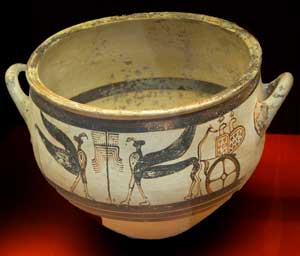
Mycenaean_Krater
The ancient Greeks mixed water and wine in kraters. This krater depicts Mycenaean chariot from about the twelfth century before the Common Era.
These stories from the Greek Dark Age formed the basis of many Greek myths. Two epic poems—the Iliad and the Odyssey—have had an enormous influence on the history of Greece and on Western literature.
Resources
Download this lesson as Microsoft Word file or as an Adobe Acrobat file.
View a Powerpoint presentation of this lesson.
Listen as Mr. Dowling reads this lesson.
Lexile Measure 1150L
Mean Sentence Length 18.44
Mean Log Word Frequency 3.46
Word Count 295
Mr. Donn has an excellent website that includes a section on Ancient Greece.
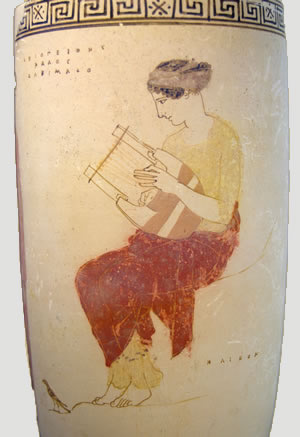
Woman_playing_lyre
A Greek vase depicting a woman playing the lyre.


